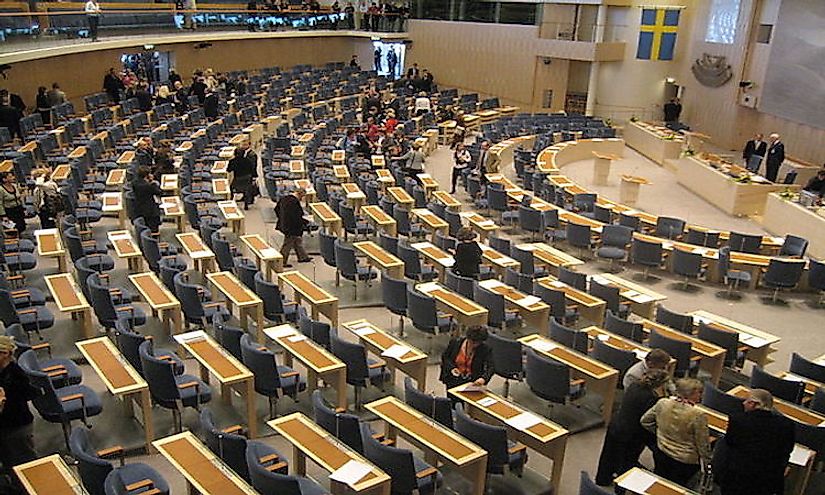What Type Of Government Does Sweden Have?

The Government Of The Kingdom Of Sweden
The current government of the Kingdom of Sweden was established in 1975 after adopting the 1974 Instrument of Government Act. This act formalized the government as a Constitutional monarchy. Therefore, the monarchy no longer takes executive decisions, but rather serves as a symbolic head of state. The government consists of the Riksdag (a legislative body), the Prime Minister, and Cabinet ministers.
The Swedish Constitution
The Constitution of Sweden regulates the relationship between the legislative and executive powers and defines the basic rights of the country’s citizens. It consists of four fundamental laws: the Instrument of Government, the Act of Succession, the Freedom of the Press Act, and the Fundamental Law on Freedom of Expression. Some of the rights ensured by the Instrument of Government include the freedom to practice religion, the freedom to protest, the freedom to create political parties, and the right to obtain information. The Act of Succession deals with the line of monarchy and declares that only individuals from the House of Bernadotte may hold the crown. The Freedom of the Press Act allows civilians access to government documents and provides for the freedom to communicate information with the media. The Law on Freedom of Expression prohibits censorship.
The Riksdag
The Riksdag is the decision-making body of the government. Since 1971, it has had 349 elected members. Political parties are proportionately represented, based on the national vote. However, a political party must receive at least 4% of the vote in order to serve. Since 1994, these members fulfill a fixed 4-year term. The Riksdag members come together to vote for the Prime Minister and the Speaker of the Riksdag officially appoints them to the office. The Prime Minister then goes on to appoint Cabinet Ministers. Although the Prime Minister and Ministers govern the country, they are responsible to the Riksdag. These individuals make the decisions for the government, not the monarch. The Prime Minister usually selects Ministers based on the political parties in the Riksdag and sometimes they are serving as members of the Riksdag when appointed. If this is the case, an alternate will take their seat so that they may serve out their ministerial duties.
Government Functions
The Prime Minister and Ministers often referred to as the government, work to carry out the decisions of the Riksdag. Additionally, they write new policies, regulations, and amendments to present to the Riksdag for decision making. The legislative body allocates budgets to each government office, and the funds are further appropriated by the Ministers. The Cabinet may represent Sweden in the European Union and negotiate agreements with other governments.
Local and Regional Government
The government of Sweden is made up of more than the Riksdag, Prime Minister, and Cabinet. It has local and regional offices as well. The country is divided into 20 counties at the regional level and 290 municipalities at the local level. The regional government is administered by county councils, which take on administrative tasks that are too large for municipal government. Some of the most common services that the regional government oversees are healthcare and tax levies. Like the regional government, the municipalities are managed by elected councils that administer a variety of public services. Some of these services include water, education, elderly care, child care, transportation infrastructure, and public welfare. Not all municipalities administer the same services, although, they are all required to administer basic public services.











